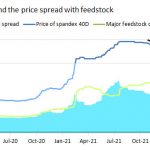Bangladesh’s importance as a textile hub has increased greatly in the past few years. Further, cheap labour, low manufacturing costs and almost duty-free access to European and Chinese textile companies has helped Bangladesh emerge as the strongest textile destination, outweighing India too.
It is therefore important to know the reasons behind the sudden rise of Bangladesh in the textile sector and how Indian textile companies are B coping with the stiff competition from its counterparts in Bangladesh.
Spinning A Success Story
The textile industry in Bangladesh can be divided into three main categories – public sector, handloom sector and the organized private sector. While the private sector is the fastest growing segment in the country, the handloom industry provides employment to a large segment of the population of Bangladesh, supplying huge quantities of fabric needed by the local market.
And since textiles and readymade garments are the two largest export sectors in the country, providing huge employment to the people, they receive tremendous support from the government of Bangladesh. Also, restrictions on investments are minimal and tax-free imports of machinery and raw materials for exports are allowed.
According to the Bangladesh Garment Manufacturers and Exporters Association (BGMEA), the total fabric requirement in the captive market is about 3 billion yards. Of this, roughly 85% to 90% is imported from countries such as China, India, Hong Kong, Singapore, Thailand, Korea, Indonesia and Taiwan.
Analysts are of the opinion that the demand for fabric is growing at the rate of 20% per year in Bangladesh. Although it is one of the largest industries in Bangladesh and growing at a faster rate, it faces serious problems nonetheless. The main issue is that the country does not produce enough raw materials necessary for the industry to expand.
The main materials used in the spinning sector are raw cotton and man-made fibres such as viscose and polyester staple fibres. Unfortunately, none of these raw materials are produced in Bangladesh. Most spinning mills in Bangladesh produce low-grade yarn.
Available figures show that current yarn production met only 22% of the total yarn demand. Despite this drawback, as many as 116 new spinning mills, each with a capacity of 25,000 spindles, will be established in the near future.
The weaving sector too is plagued by the lack of organization and coordination. The existing weaving capacity in Bangladesh can meet only about 40% of fabric demand; the rest is imported.
However, the increasing trend of expansion in the weaving sector is clear from the fact that 223 modern weaving plants, each with an annual capacity of 10 million metres, are likely to come up in the near future.
The knitting and hosiery sectors look brighter than weaving sectors and about 80% of garment accessories ike cartons, threads, buttons, labels, poly bags, gum tapes, shirt boards and neck boards are being produced in Bangladesh and contribute to the national gross domestic product (GDP). However, the textile industry is just budding.
At present, there are 21 textile companies under the Bangladesh Textile Mills Corporation (BTMC). The role of BTMC within Bangladesh’s textile industry has substantially been altered since the denationalization of a large number of public sector textile mills over the last decade and a half.
The government-owned Bangladesh Export Processing Zones Authoritypromotes foreign and local investment in its export processing zones, which were developed to provide potential investors a business environment that is free of complicated procedures.
The government has also initiated various policy measures such as rationalization of tariffs and taxes on import of capital machinery, raw materials, dyes and chemicals and reduction of interest on long- and short-term loans.
The Bangladesh government offers great incentives to encourage the use of local fabrics in export-oriented garment industries. To encourage textile export, companies can import capital machinery duty-free. Cotton also may be imported duty-free.
Moreover, the government recently implemented several policy reforms to create a more open and competitive climate for foreign investment.
Rising garment export trends from Bangladesh, along with some benefits provided by the government, have created concerns for the government of Pakistan. Textile tycoons in Karachi are thinking of shifting their business to Bangladesh.
These steps have helped Bangladesh emerge as a big textile hub. Though the country might be dependent on raw material such as cotton, its textile-oriented policies continue to help retain its position as the most preferred textile destination for European and Chinese companies.
India : On a Shaky Ground
India, on the other hand, has lost prominence to Bangladesh due to its closed textile policies. Despite being a cotton-surplus country, the Indian government waived off duty on 46 apparel products coming from Bangladesh to India.
Heavy duty on textile products for countries in Europe and other parts of the world has forced fabric manufacturers to gain a backdoor entry into the fast-evolving Indian textile market.
Not surprisingly, many Indian textile companies are starting manufacturing units in Bangladesh due to various inherent market advantages. This move would not impact large textile companies that are into retailing. Instead, it would hurt small retailers who do not have the wherewithal to establish shops in Bangladesh.
Large textile companies with a significant exposure to retailing like Pantaloons, Shoppers Stop, Arvind and Madhura Garments have set up production units in Bangladesh.
Experts believe that this grant from the government would result in joint collaborations of Indian textile and retail companies with Bangladeshi manufacturers. In recent years, Bangladesh has emerged as an economical and a lucrative garment-manufacturing hub for many European countries and also Asia’s giant China.
According to estimates, Bangladesh has overtaken India in terms of export of garments. Today, Bangladesh exports 50% more garments than what India does.
Factors such as cheap labour costs (almost one-third of Indian labour costs), low power costs (50% lower than India) and overall lower production costs 30% to 40% have made Bangladesh cost-effective and a lucrative textile hub for companies based in China and Europe.
Such has been the growing importance of Bangladesh that according to CMI-India Trades data, imports from Bangladesh to India have risen to 3.3% (of total imports) in 2011 from 0.2% in 2006, while India’s exports to Bangladesh of total exports have been hovering around 2% in the last five years.
Another major factor that works in favour of Bangladesh is its treaty with China and other countries in Europe. Chinese companies that are known for their fabrics, export to Bangladesh and procure garments duty-free.
On the other hand, Chinese companies have to pay duty to export fabrics to India. Hence, experts believe this move by India would give back door entry to Chinese fabrics into Indian apparel markets.
Back home, companies that are into man-made and synthetic fibres would be impacted the most in comparison with a large number of listed peers who have cotton-specific businesses. Companies like Sutlej, Sangam India and Banswara Syntex that are into man-made and synthetic fibres are the ones which would get impacted.
Besides, small retailers in West Bengal, Ludhiana and Gandhinagar would also be affected. In the listed category, however, most companies that have cotton-specific activities (like trading) would not be impacted. Another upshot of this move by the government is huge unemployment. It is believed that if one considers a conservative estimate of $2.5 billion worth of exports to Bangladesh, nearly 1.25 million labourers would lose jobs in India.
Bangladesh: A Textile Hub
Even today Bangladesh derives a substantial part of its exports revenues from the textile sector. It is estimated that more than 70% of the exports earnings of the country come from the textile sector itself. According to the data by the Export Promotion Bureau, woven and knitwear products in the apparel segment accounted for 78.14 % or $17.91 billion in fiscal 2010-11, rising from 77.12 % or $12.50 billion in fiscal 2009-10. Many believe the contribution would be more than 80% if other apparels like home textiles, specialised woven and knitted fabrics are clubbed with garment products.
Despite a huge dependence on the textile industry, Bangladesh is yet to develop a situation for raw material: cotton. The country is highly dependent on cotton as a chief source material. Experts believe this could be a potential threat to the growth of its textile industry.
The two factors that have fostered the growth of the textile industry could not be its core differentiating factors in the long run. Factors such as cheap labour and tax-free entrance, which have catapulted Bangladesh’s reputation as an economical textile hub can also be cultivated by countries such as Vietnam, Cambodia and more importantly India and China.
Hence, experts believe that to increase its competitiveness as a textile hub, the country should improve its infrastructure. It is estimated that it takes three months for a factory in Bangladesh to deliver products to the US and other European countries after getting the order. This is quite a long time for manufacturing hubs in other countries. This would boost the productivity of workers also, which, in turn, would raise the productivity of textile mills.
(Courtesy : Nirmal Bang, SMR)





